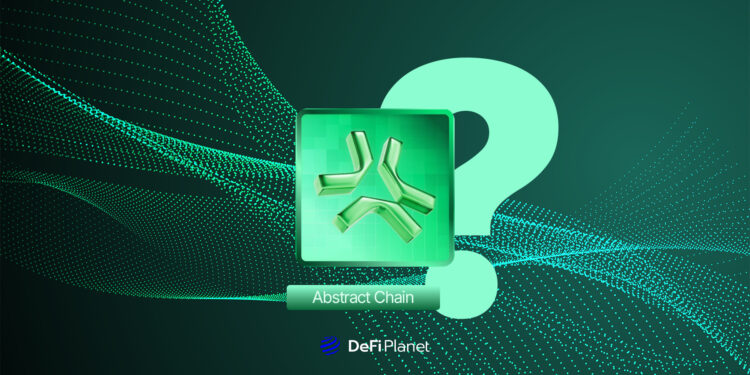Last updated on May 27th, 2025 at 01:08 pm
Despite the crypto market approaching $4 trillion in 2024, mainstream adoption remains slow. Everyday users still struggle with concepts like gas fees, seed phrases, and decentralized applications. This complexity has kept blockchain mostly in the hands of tech enthusiasts and investors. With only 6.8% of the global population owning crypto, there’s clear interest — but the usability gap is still wide.
While projects have long tried to bridge this gap with more consumer-facing apps — including Web3 games and decentralized social platforms — many still suffer from scalability issues, high costs, and poor user experience.
Layer 2 (L2) solutions emerged to address Ethereum’s performance bottlenecks. By processing transactions off-chain, solutions like Optimistic Rollups and ZK-Rollups can scale throughput from 15–30 transactions per second (TPS) on Ethereum’s Layer 1 to over 1,000 TPS or more. Yet despite these improvements,most L2s still feel like developer tools rather than consumer platforms: users must manage multiple wallets, switch networks, and handle native gas tokens. These barriers may seem minor to seasoned users, but they are enough to drive away the average consumer.
Abstract Chain, developed by Igloo Inc. — the team behind Pudgy Penguins — wants to change this. Built as an Ethereum Layer 2 blockchain, it introduces a user-centric approach to blockchain interactions. It wants to make blockchain usable without expecting users to understand how it works. Its goal is to abstract away complexity and offer a seamless, intuitive experience—similar to how modern web and mobile apps function
In this review, we break down what Abstract Chain offers, how it works, the problems it aims to solve, and the challenges it faces as it seeks to shape the future of blockchain usability.
How Abstract Chain Works
Abstract is built on top of Ethereum, using zkSync’s ZK stack and EigenDA to provide a fast, low-cost, and secure environment for consumer crypto apps. It’s a zk-rollup that scales Ethereum by moving computation off-chain while verifying transactions through ZK proofs. This allows Abstract to improve Ethereum’s scalability while keeping its high-security features intact.
Chain abstraction is at the heart of Abstract’s approach. Instead of requiring users to juggle different wallets, manage gas fees, or switch networks, Abstract abstracts these tasks into the background. This means users can interact with dApps without needing to understand the underlying infrastructure.
It’s a fundamental shift. Where traditional L2s require some technical literacy, Abstract is designed so that end users don’t even need to know they’re using blockchain — just like how people use cloud services without thinking about the servers.
RELATED: Why Chain Abstraction Could Be the Silver Bullet for Crypto Adoption
The Abstract Global Wallet (AGW) is a direct implementation of this concept. The AGW is a smart wallet that supports login via email, passkeys, or social accounts—no seed phrases required.
Security is preserved through a three-part key structure: private keys are split and stored across the user’s device, the cloud, and a backup service. This setup simplifies recovery without compromising on safety and thus makes onboarding safer and far less intimidating than traditional wallet setups.
AGW also adds recovery options, a crucial feature for mainstream users who are likely to lose access credentials without support.
Panoramic Governance
One limitation of many L2s is their revenue model. While they earn gas fees, users and developers rarely benefit from the value they help create. Abstract introduces “Panoramic Governance” — a model that distributes chain revenue to both users and app developers based on their contributions.
This model creates a more aligned incentive structure. Developers are rewarded for driving activity, and active users benefit through reduced fees and potential rewards. A unique component of this system is the Active Participation Threshold (APT), which ensures that only genuinely active participants receive rewards, discouraging low-effort or passive engagement.
Bridging Users and Networks
Abstract also facilitates cross-chain transactions and liquidity aggregation, allowing users to move assets across different chains without needing to manually switch networks or handle gas tokens. This functionality removes yet another layer of friction, creating a more seamless and cost-effective experience for everyday users.
Together, these features make Abstract one of the few L2s aiming not just to scale Ethereum — but to radically simplify it for the mainstream.
What Abstract Chain’s Approach Means For the Crypto Ecosystem
Abstract Chain’s design choices reflect a broader industry shift toward mass adoption. For blockchain to become part of everyday life, its complexities must be hidden, not celebrated. Abstract embraces this principle by blending technical strength with user-first design.
From a market perspective, Abstract doesn’t just improve crypto usability—it reframes what an L2 can be. Instead of focusing solely on throughput, it positions itself as a full-stack consumer ecosystem that prioritizes developer experience, app incentives, and end-user simplicity. If successful, Abstract could shift how future Layer 2s are designed—less about raw speed, more about real-world accessibility.
Long term, this might help achieve what many in Web3 have envisioned: blockchain functioning invisibly in the background. Its architecture also lays the groundwork for blockchain to “disappear” in the background—where users interact with decentralized apps as easily as they would on Web2 platforms.
Challenges Abstract Chain Must Overcome
While Abstract’s value proposition is clear, it faces stiff competition and practical obstacles. The Ethereum Layer 2 ecosystem is already crowded, with established players like Arbitrum, Optimism, Base, zkSync, and Starknet. These platforms benefit from larger developer communities, more liquidity, and brand trust so competing with these established ecosystems requires more than just technical differentiation.
Abstract must differentiate itself not only through product design but also through developer engagement and partnerships. Its unique features—like AGW and Panoramic Governance—must translate into real-world traction, not just technical potential. Because if these other L2s adopt similar abstractions—such as native wallets, no network switching, or gasless UX—Abstract’s current edge may erode. Maintaining that edge will require fast execution, continuous feature evolution, and strong feedback loops between users and developers.
On the other hand, chain abstraction is a compelling feature but it introduces architectural complexity. Smooth UX must not come at the cost of auditability, user control, or security. Abstract must ensure that users who do want to engage with the technical layer still have that option, without undermining the simplified path for non-technical users.
Security is another critical area. Greater abstraction and cross-chain functionality come with higher risk — especially from exploits that target bridging infrastructure or wallet recovery mechanisms. As Abstract onboards more users and assets, it will become a more attractive target for attacks. The success of its wallet recovery system, for instance, depends heavily on its ability to prevent unauthorized access and data breaches. Continuous auditing and active threat modelling will be essential to prevent reputational and financial damage.
Scalability, while partly addressed through the zkSync stack and EigenDA, also remains a live concern. Theoretical throughput does not always translate into real-world performance at scale. Abstract will need to demonstrate that it can handle a growing user base without performance degradation or increased latency.
Lastly, developer adoption is key. No matter how smooth the user experience is, if developers don’t see unique benefits in building on Abstract — whether through better tooling, incentives, or exposure — the ecosystem may stagnate and platform risks becoming another niche L2. Competing with the developer ecosystems of existing L2s will require Abstract to invest heavily in onboarding, documentation, SDKs, and long-term incentive programs.
Final Thoughts
Abstract Chain introduces a much-needed shift in how we think about Layer 2 infrastructure. By focusing on usability, wallet simplicity, and community-aligned incentives, it breaks away from the throughput-obsessed narratives that dominate the Ethereum scaling conversation.
Its use of chain abstraction, passkey wallets, and incentive-aligned governance makes it one of the more user-centric L2s to date.. But execution will be key. The platform’s long-term success hinges on more than just good design. It must navigate stiff competition, win developer loyalty, and maintain security as it scales. Its unique features offer an edge, but execution will ultimately determine whether Abstract becomes a blueprint for the future or fades among more dominant L2s.
If Abstract Chain can deliver on its promise — making blockchain as seamless as web applications — it could shift the industry toward a future where decentralization is not just powerful, but also invisible. The question now is whether the market is ready to embrace such a vision — and whether Abstract can lead that charge.
Disclaimer: This article is intended solely for informational purposes and should not be considered trading or investment advice. Nothing herein should be construed as financial, legal, or tax advice. Trading or investing in cryptocurrencies carries a considerable risk of financial loss. Always conduct due diligence.
If you would like to read more articles like this, visit DeFi Planet and follow us on Twitter, LinkedIn, Facebook, Instagram, and CoinMarketCap Community.
Take control of your crypto portfolio with MARKETS PRO, DeFi Planet’s suite of analytics tools.





















